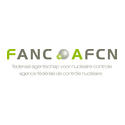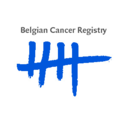In short
The Nucabel study was performed on demand of the Belgian Minister of Social Affairs and Public Health. The study investigated the possible health risks and particularly cancer risks of living in the vicinity of Belgian nuclear sites by means of an epidemiological study at national level.
Project description
The possible health risks associated with living in the vicinity of nuclear installations, a public concern for several decades, was boosted worldwide by the publication of a German study, which found more childhood leukemia cases than expected for those living at close proximity of German power plants. The radiological incident that happened at the Belgian Institute for Radio-elements in Fleurus in 2008 raised public concern even more. Hence, the Minister for Social Affairs and Public Health ordered a nation-wide epidemiological study to take a first look at the possible health risks associated with living in the vicinity of nuclear sites.
More specifically, the objective was to investigate whether there is an excess of cancer incidence (number of new cancer cases per year per 100,000 persons) in the population living around the nuclear sites in Belgium as compared to the rest of Belgium or to a comparable reference population. The objective was also to investigate the association between cancer occurrence and different surrogate exposures from the nuclear sites, i.e. distance, wind direction and frequency, hypothetical estimated releases from the nuclear sites.
The Nucabel 1 study was performed at the level of the municipality. No increased incidences of thyroid cancer were observed for the population living in the vicinity of the nuclear power plants of Doel and Tihange. Close to the sites of Fleurus and Mol-Dessel, the incidence of thyroid cancer was slightly higher than expected. This study performed an epidemiological follow up which doesn’t not allow to conclude to a causal relationship between increased cancer incidence and living in the vicinity of nuclear sites. It also does not provide information at individual level.
The Nucabel-2 study was requested by the Belgian Federal Parliament as a follow-up study of the previous study. The study was carried out with cancer data on a smaller geographical level, i.e. the statistical sectors which are subdivisions of the municipalities. Working at the statistical sector level allows more precise analyses.
Added value for public health
Assessment of the possible health risks and particularly cancer risks of populations living in proximity of Belgian nuclear sites.
Added value at scientific level
Acquisition of scientific knowledge, providing information to the authorities and the public in the areas of cancer risks and radiation exposure.
Results
The results of the Nucabel 2 study showed no evidence for higher thyroid cancer incidence in the vicinity of the nuclear power plants of Doel and Tihange. Also, in the vicinity of the industrial and research nuclear site of Mol-Dessel there was no evidence for a higher incidence.
However in the 20km area around the industrial and research nuclear site of Fleurus, there was a significant gradient for thyroid cancer incidence with the different types of exposure (decreasing distance, increasing wind direction frequency and increasing exposure to estimated hypothetical radioactive discharges). In addition, in the close vicinity of this site, there was an indication for a slightly higher incidence, but it was not statistically significant. It is worth noting that geographical variations in the incidence of thyroid cancer exist throughout Belgium. Those observed around Fleurus are thus not exceptional as similar variations can be observed in areas where there are no nuclear sites.
More information can be found in the NUCABEL 2A report below.
Sciensano's project investigator(s):
Service(s) working on this project
Partners





